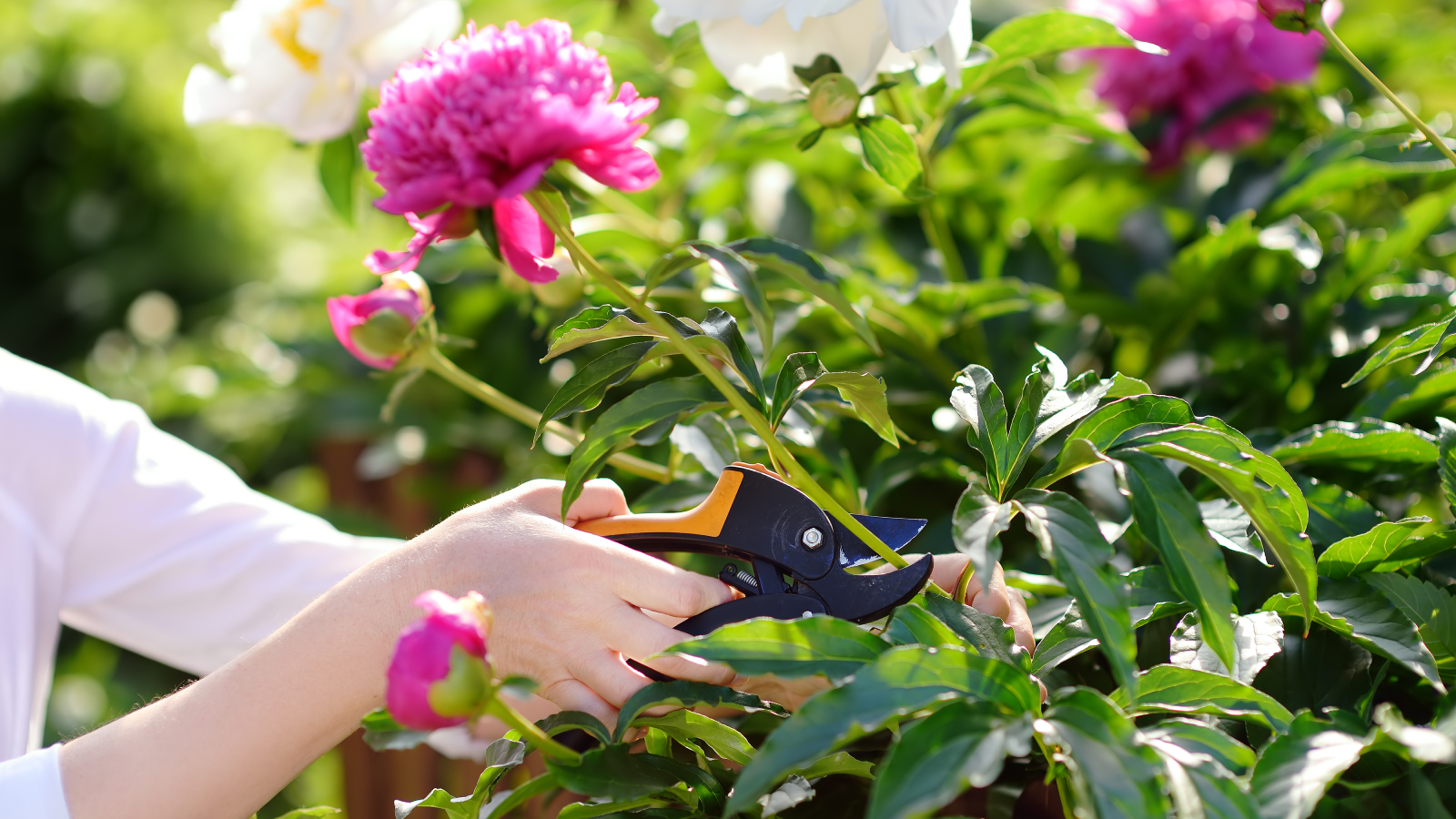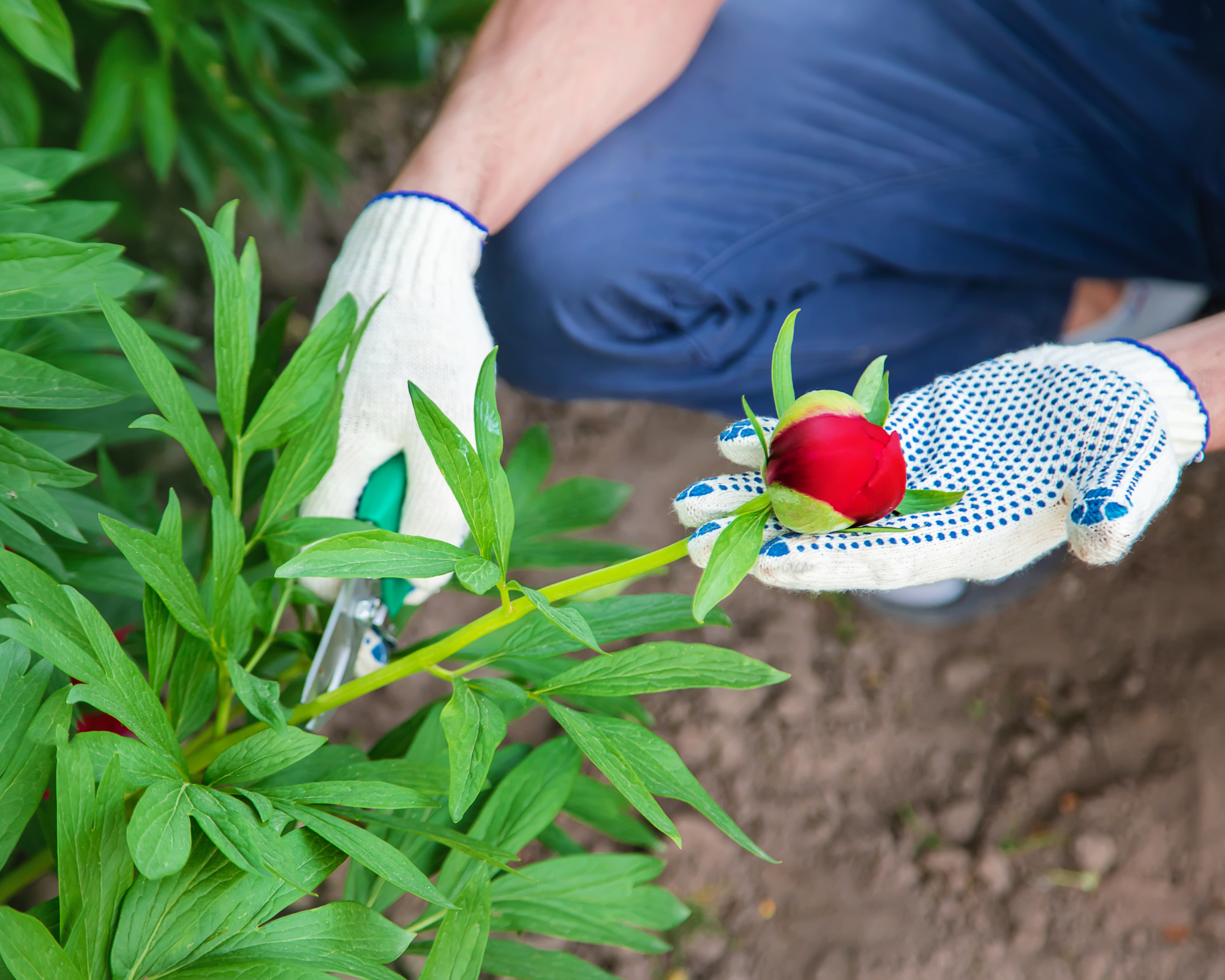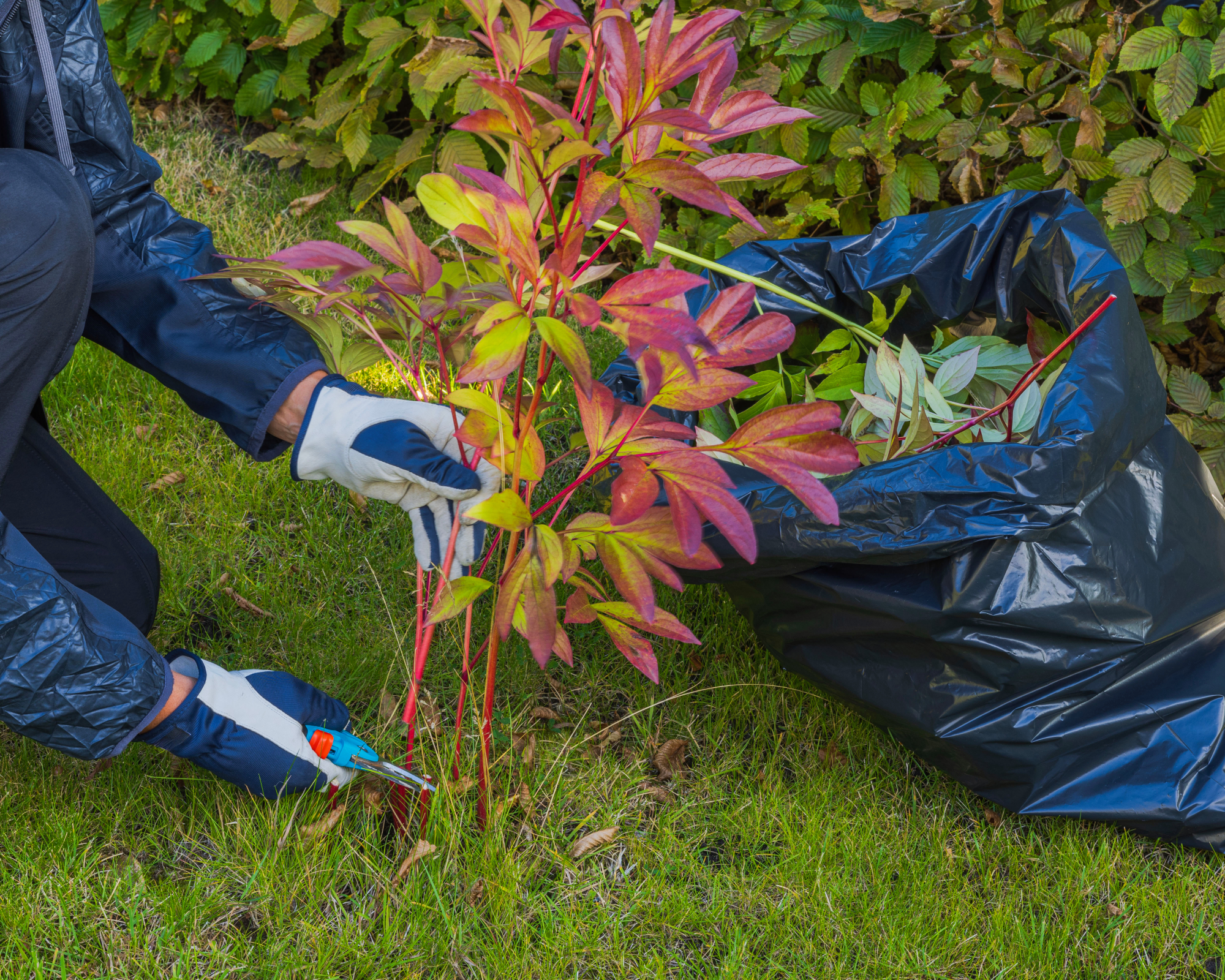Pruning Peonies For Better Blooms & Healthier Plants: A Complete How-To Guide
Pruning peonies is a key element of proper peony care. Discover the most common methods for pruning peonies and when to trim plants for the best results.

Jackie Carroll
Pruning peonies the wrong way can cause diminished blooms and even disease. That’s why it’s important to know how and when to prune peonies properly. Understanding the different types of pruning like deadheading, disbudding, and cutting back will help you to keep garden beds looking their best and ensure that peony plants are healthy for years to come. In this guide, we’ll explore the most common methods of peony pruning and when to trim plants for the best results.
Best Methods for Pruning Peonies
There are several reasons why you should prune peonies and different methods depending on the reason. Whether you want to prune peonies for more blooms, cut flowers for arrangements, clean up spent blooms, or prepare plants for winter, we’ll take a look at each approach in detail. Here are the four most common methods for how to prune peonies:
1. Disbudding Peonies
Disbudding is a simple type of pruning that can increase bloom size. While it may decrease the amount of blooms, each flower will be larger and better formed. Disbud peonies by pinching off small lateral buds as they form along the sides of the stem, leaving the main terminal bud alone. This pruning method isn’t necessary, but it is an easy and beneficial addition to your normal routine for peony care in spring.
2. Pruning Peonies for Cut Flowers
If you want to enjoy beautiful peony blooms indoors as well as in the garden, you need to learn how to prune peonies for long-lasting cut flowers. The key to perfect peonies for bouquets and arrangements is pruning them before their flowers open.
Wait until buds reach what is sometimes known as the “marshmallow stage.” They should resemble the size and squishiness of a marshmallow. The best way to determine this is to give buds a squeeze. If they are hard, leave them be. But if they have a little bit of give, like a squidgy marshmallow, they are ready to cut.

Trim stems with sharp, clean pruners at a 45 degree angle just above a leaf. Cut to the desired length for your vase or bouquet. Do not cut more than one third of the total blooms or else you risk diminished flowering the following season.
3. Deadheading Peonies
Deadheading is often considered an essential part of plant care. This term refers to the removal of old or faded flowers from plants. In some species, the process of clipping faded blooms will help to encourage the production of more flowers. This is not the case for peonies, though, as these perennials only produce buds once per season.
Sign up for the Gardening Know How newsletter today and receive a free copy of our e-book "How to Grow Delicious Tomatoes".
However, deadheading is beneficial as a means to prevent seed set. Deadheading allows each plant to direct its energy to its root system and the formation of next year’s flower crop. The removal of spent flowers also helps you maintain a neat and tidy appearance in your garden beds. To deadhead peonies, simply snip back each stem to the nearest set of healthy leaves with a pair of sharp, clean pruners.
4. Pruning Peonies for Winter
Whether or not you should be trimming peonies for winter depends on the type of peony you have. Herbaceous peonies, which are the most common in the home garden, then tutting back plants should be a regular part of your fall peony care routine. After the first hard frost in fall, cut back peonies to about 3 inches (8 cm) high or all the way to the ground. Then remove the dead foliage and debris to prevent pests and diseases overwintering and harming next year’s garden.

Tree peonies differ from herbaceous peony species, which means they have different pruning requirements. Tree peonies produce woody stems and form a much more robust plant structure. With the arrival of cooler weather in the fall, tree peonies drop their leaves. Do not trim or cut back tree peonies before winter.
Occasionally, you may need to remove dead or damaged growth, but it’s best to do this in late winter or early spring, before growth resumes. You can also trim tree peonies to maintain your desired size and shape directly after the plant finishes blooming.
Frequently Asked Questions
When should peonies be cut back?
As noted above, when to prune peonies depends on what method and purpose you have for pruning. However, as a rule of thumb, you should prune herbaceous peonies in fall after the first hard frost and cut away any diseased foliage as soon as you notice it.
Cut back dead or diseased stems until you reach live, healthy growth and be sure to clean pruners before using them on other plants to contain the spread of disease. Do not compost cuttings that are diseased or infested with insects. Bag and discard them instead.
What happens if you don’t cut back peonies?
If you don’t cut back herbaceous peonies in winter, diseases like botrytis blight, which is common in peonies, can overwinter in the garden. This makes plants susceptible to diseases next spring and can impact not only blooms, but overall plant health.
What happens if you cut back peonies too early?
As noted, the best time to cut back peonies is with the arrival of cool temperatures in the fall. Though many gardeners are eager to begin the process of clearing their garden at this time, cutting back peonies prematurely may negatively impact the overall health of the plants.
Peonies depend upon the sun to maintain their lush appearance. Energy gathered throughout the growing season is vital to the production of new foliage and flower buds. Gardeners who have mistakenly pruned their peonies too early are likely to experience both decreased bloom and loss of vigor.

Laura Walters is a Content Editor who joined Gardening Know How in 2021. With a BFA in Electronic Media from the University of Cincinnati, a certificate in Writing for Television from UCLA, and a background in documentary filmmaking and local news, Laura loves providing gardeners with all the know how they need to succeed, in an easy and entertaining format. Laura lives in Southwest Ohio, where she's been gardening for ten years, and she spends her summers on a lake in Northern Michigan. It’s hard to leave her perennial garden at home, but she has a rustic (aka overcrowded) vegetable patch on a piece of land up north. She never thought when she was growing vegetables in her college dorm room, that one day she would get paid to read and write about her favorite hobby.
- Jackie CarrollWriter

